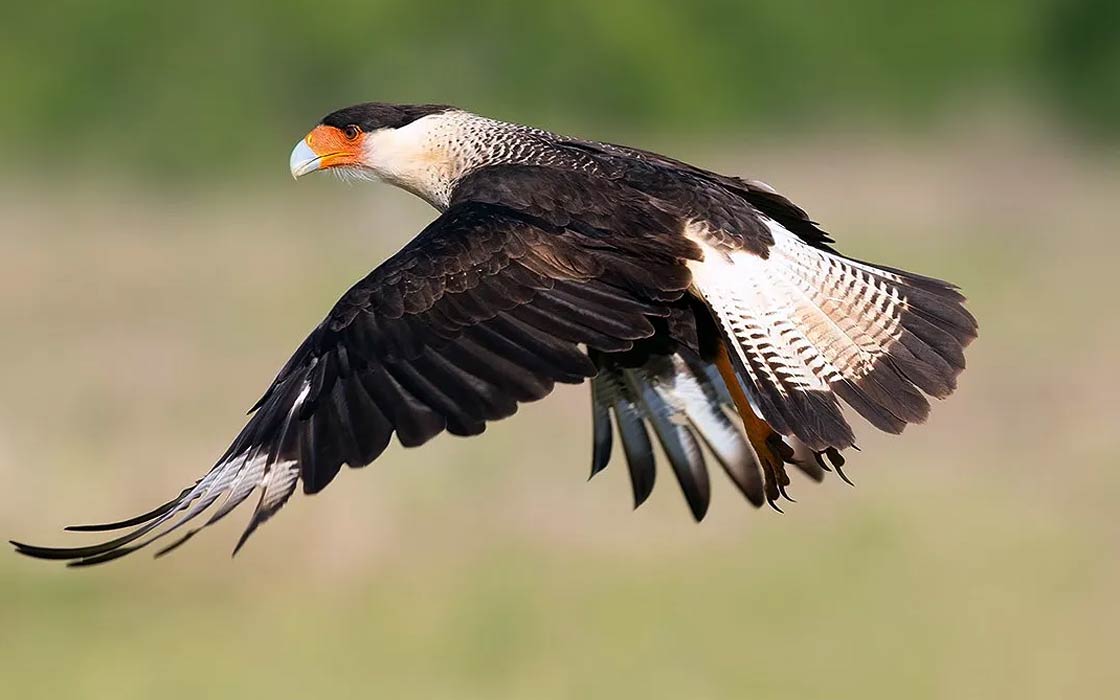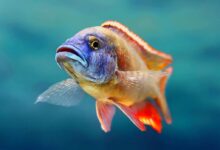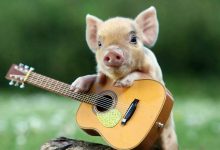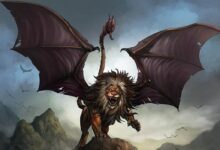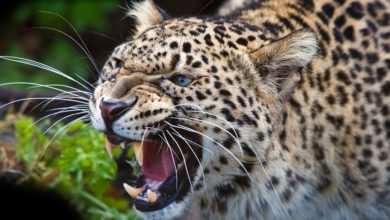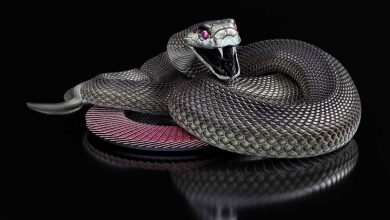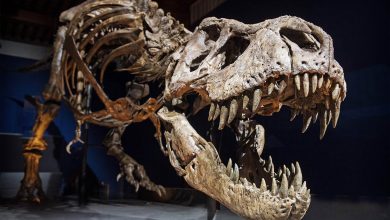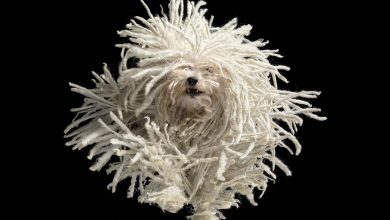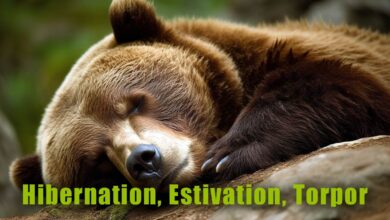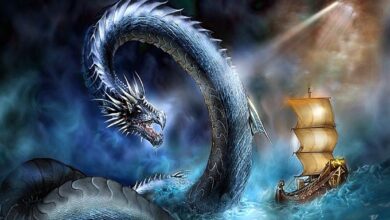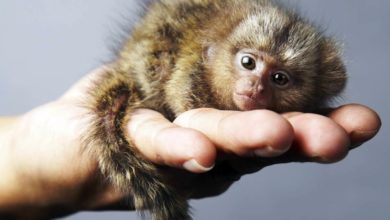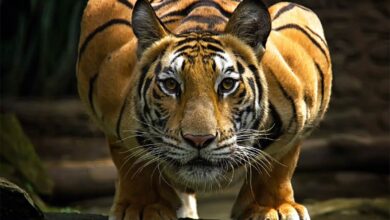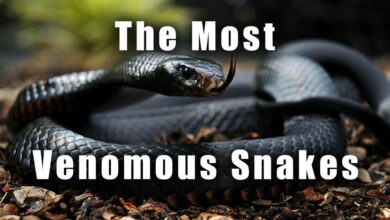Crested caracara, Mexican eagle
The crested caracara is a species of bird of prey belonging to the falcon family (Falconidae), which stands out both in appearance and behavior compared to its relatives. It is not a typical falcon, hunting swift prey from the air – the caracara combines the characteristics of a predator with an opportunistic lifestyle, more reminiscent of vultures or crows. Its distinctive crest on the head, contrasting plumage, and orange skin around the beak make it easily recognizable in its environment.
This bird has fascinated people for centuries, playing an important role in the ecosystems of South and Central America, as well as in the culture of some regions, for example, as the national symbol of Mexico. Thanks to its versatility and adaptability, the crested caracara remains one of the more intriguing representatives of birds of prey, attracting the attention of both scientists and nature enthusiasts.
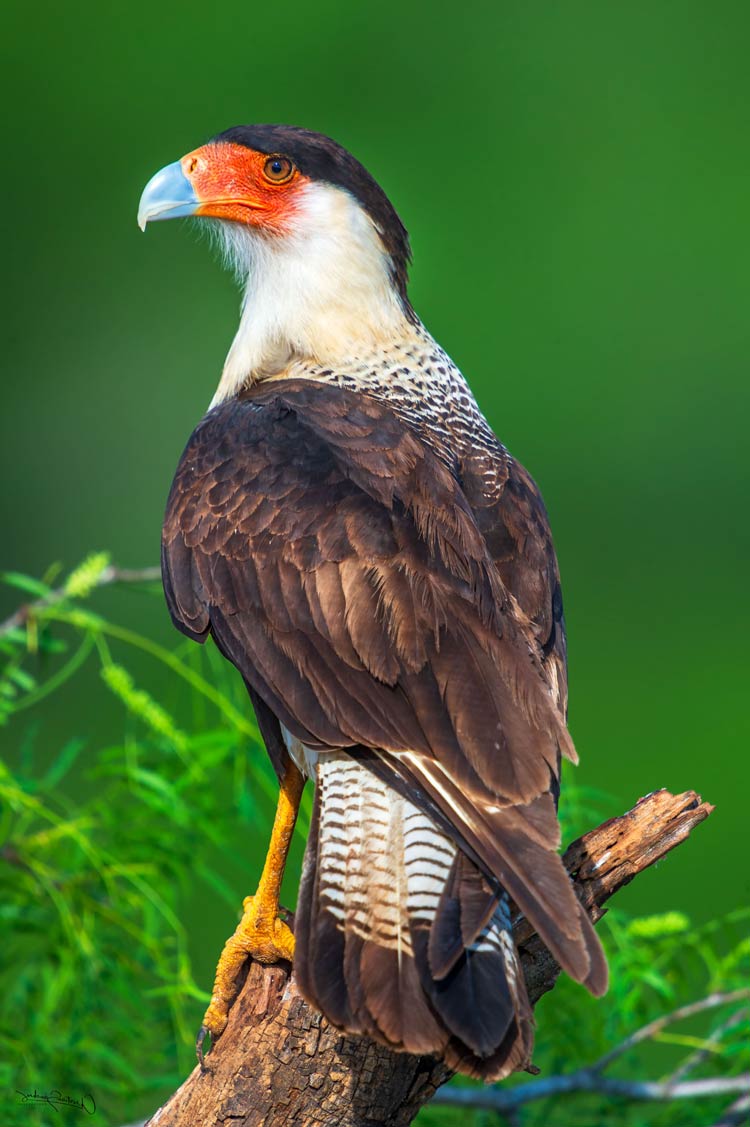
Classification
- Kingdom: Animals (Animalia)
- Phylum: Chordates (Chordata)
- Class: Birds (Aves)
- Order: Falcons (Falconiformes)
- Family: Falcons (Falconidae)
- Genus: Caracara
- Species: Crested caracara (Caracara plancus)
- Names: crested caracara, Mexican eagle
Taxonomic Notes
The crested caracara belongs to the subfamily Polyborinae within the falcon family, which includes birds with a more opportunistic lifestyle than typical falcons that hunt in flight.
Previously, some sources classified it under the name Polyborus plancus, but currently, Caracara plancus is accepted as the valid name.
This species is closely related to other caracaras, such as the Caracara cheriway, with which it sometimes hybridizes in the wild in areas of overlapping distribution.
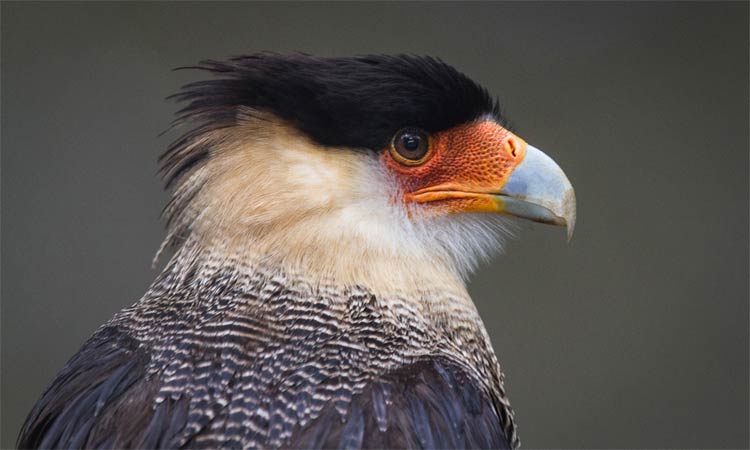
Distribution
The crested caracara also known as the Mexican eagle inhabits vast areas of South America and parts of Central America. Its range extends from southern Brazil, Paraguay, Uruguay, and Argentina, through Bolivia, Peru, and Colombia, to Panama and the southern reaches of the United States, especially Texas and Florida. It prefers open spaces such as savannas, meadows, pastures, and agricultural lands, avoiding dense forests.
Characteristics
The crested caracara is a medium-sized bird, reaching a length of 50 to 65 cm (19.7 to 25.6 inches) and a wingspan of 120 to 132 cm ( 47 to 52 inches). Body weight ranges from 0.9 to 1.6 kg (2 to 3.5 pounds). Adult individuals have a distinctive crest on their head, white-cream plumage on the neck and chest, black feathers on the abdomen, and reddish skin on the face, which can change shade depending on the bird’s mood. The wings are dark with white patches visible in flight, and the legs are long and yellow, adapted for walking.
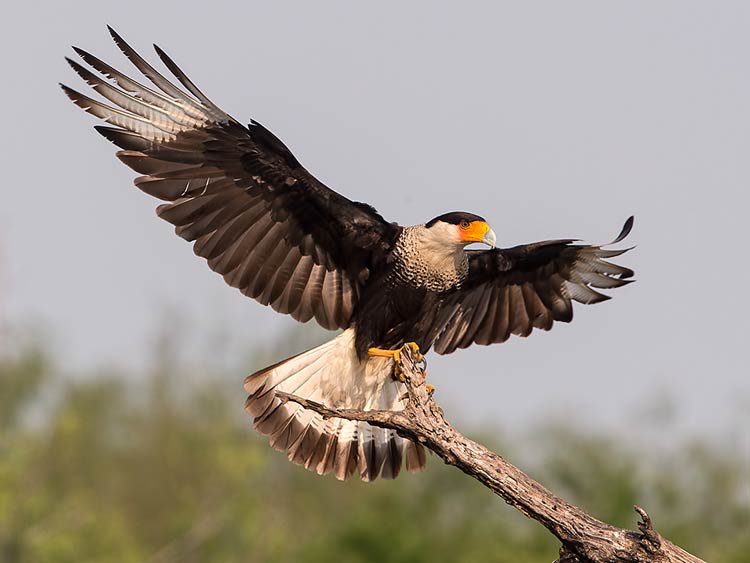
Diet
The crested caracara is an opportunistic omnivore. It feeds on carrion, which makes it similar to vultures, but it also actively hunts small animals such as insects, reptiles, amphibians, birds, and small mammals. It often eats the eggs of other birds, as well as fruits and food scraps left by humans. Its ability to adapt its diet to available resources is crucial for survival in diverse environments.
The crested caracara is a bird that combines the elegance of a predator with the pragmatism of a scavenger, making it a unique element of the Americas’ wildlife. Its adaptability and distinctive features make it one of the most recognizable species in its environment.
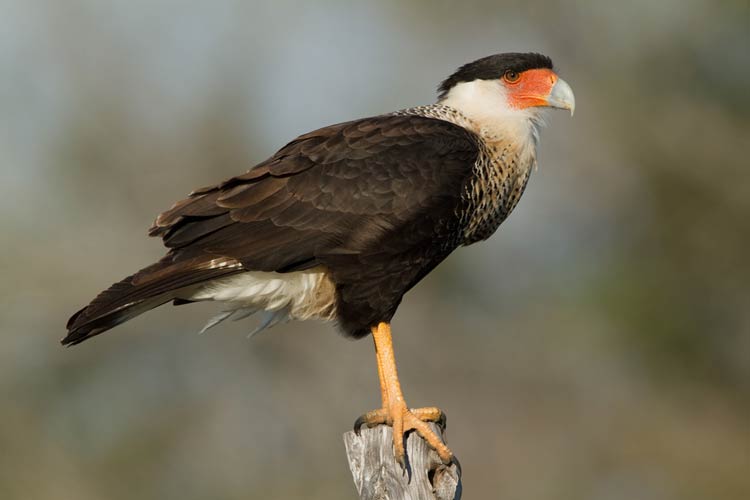
Behavior, Lifestyle and Ecology
The crested caracara is distinguished by its terrestrial lifestyle – it walks on the ground more often than it flies, which is unusual for birds of prey. It is a social bird, often found in small groups, especially at carrion. Its flight is slower and less agile than that of other falcons, but it can soar at high altitudes. In the ecosystem, it plays the role of a “cleaner,” helping to remove dead animals and control pest populations.
Reproduction and Parenting
The breeding season of the crested caracara varies by region, but typically occurs from spring to summer in each hemisphere. These birds build nests from sticks in trees, shrubs, or even on the ground if suitable sites are lacking. The female lays 2 to 3 eggs, which she incubates for about 28–32 days. Both parents care for the chicks, feeding them for several weeks after hatching. The young leave the nest after about 2–3 months but may remain with their parents longer, learning to forage.
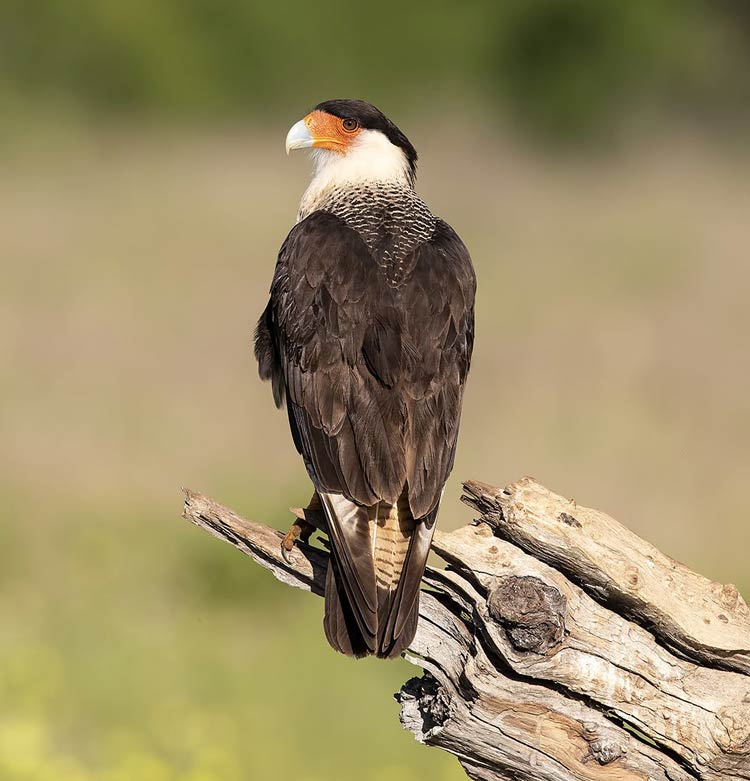
Threats
The crested caracara is not currently considered a species threatened with extinction – its population is stable and widely distributed. However, locally it may be vulnerable to habitat loss due to deforestation and agricultural intensification. Collisions with vehicles are another threat, as these birds often forage along roadsides. In some regions, they are also persecuted by humans who view them as pests.
Detailed Data / Dimensions
Crested Caracara (Caracara plancus)
- Length: 50–65 cm (19.7 to 25.6 inches)
- Wingspan: 120–132 cm (47 to 52 inches)
- Weight: 0.9–1.6 kg (2 to 3.5 pounds); average 1.3 kg
- Lifespan:
- In the wild: up to 18 years
- In captivity: up to 40 years
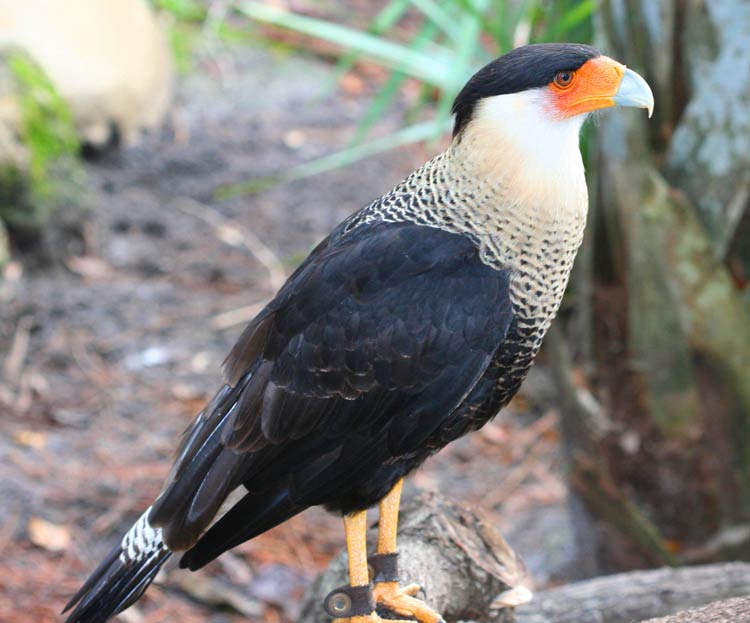
Interesting Facts
- The crested caracara is the national bird of Mexico and appears on the country’s coat of arms as a symbol of strength and freedom, although it is depicted in a more stylized form on the coat of arms.
- Its orange skin around the beak changes color depending on its emotions – it becomes brighter when the bird is excited.
- Unlike most falcons, the crested caracara rarely hunts in flight, preferring to look for food on the ground.
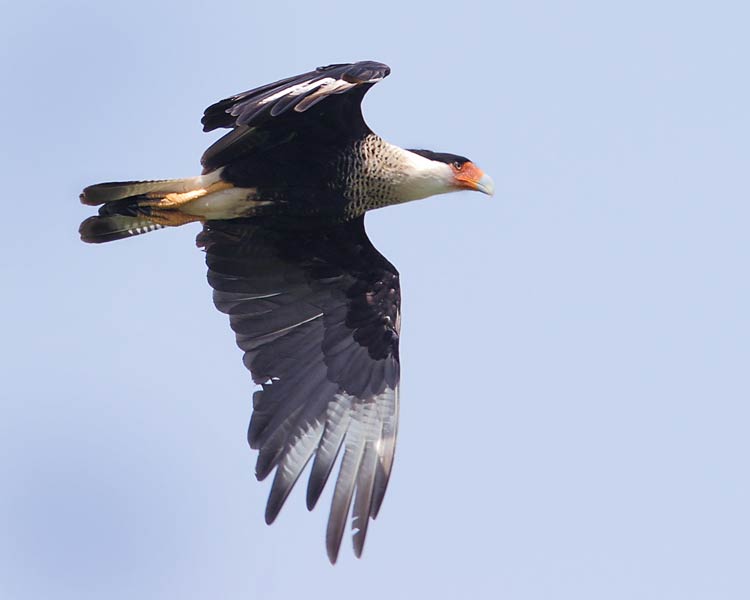
Recommended
- African lion
- Asian lion
- African elephant
- African forest elephant
- Asian elephant
- Moose
- Owls
- Parrots
- Giraffe
- Gorillas
- Zebroid
- Zebra
- Giant anteater
- Lizards
- Toucans
- Lemurs
- Secretarybird
- Ants

